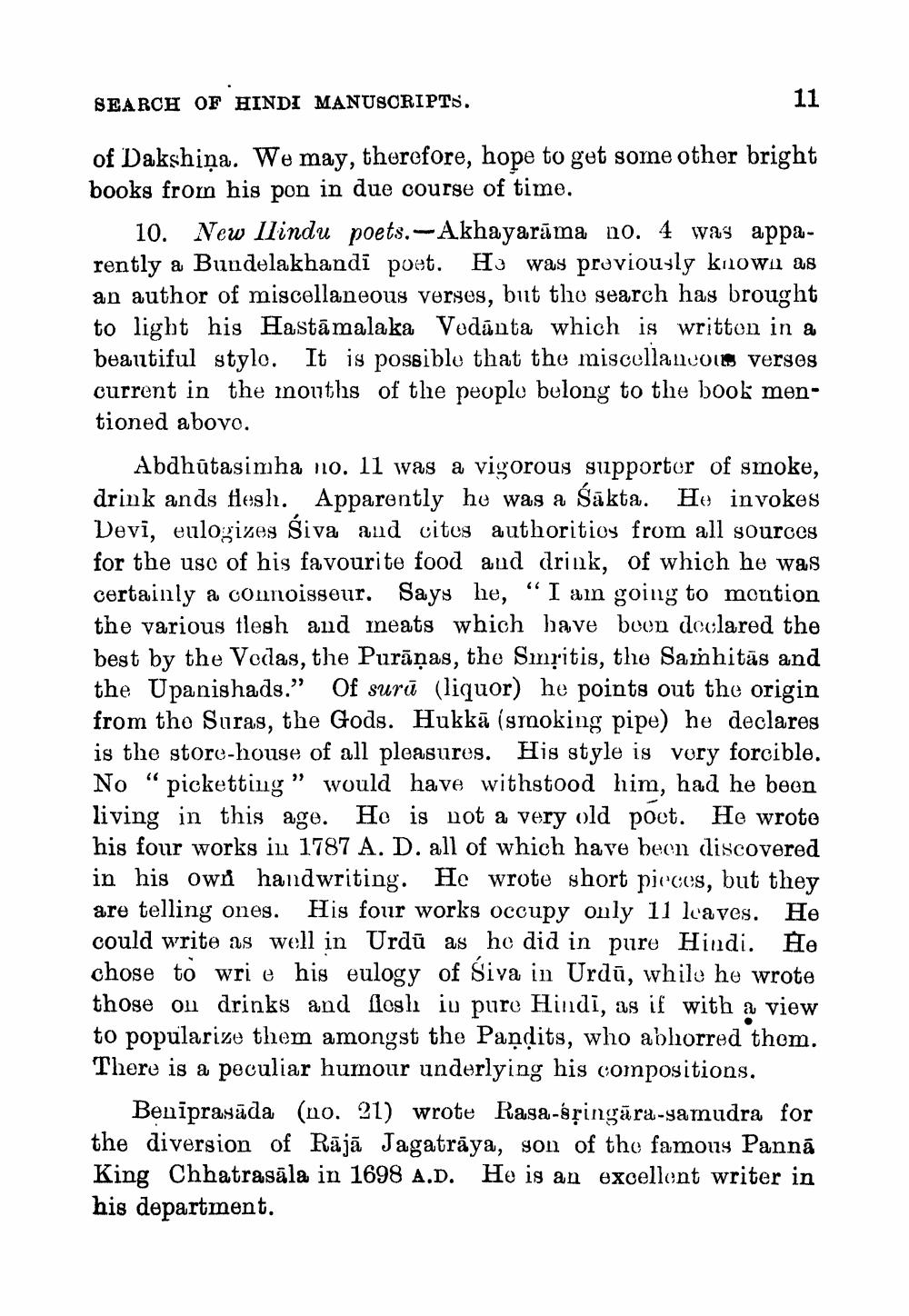________________
SEARCH OF HINDI MANUSCRIPTS.
11
of Dakshina. We may, therefore, hope to get some other bright books from his pon in due course of time.
10.
New Ilindu poets. -Akhayarama no. 4 was apparently a Bundelakhandi poet. He was previously known as an author of miscellaneous verses, but the search has brought to light his Hastamalaka Vedanta which is written in a beautiful style. It is possible that the miscellaneous verses current in the mouths of the people belong to the book mentioned abovo.
Abdhutasimha no. 11 was a vigorous supporter of smoke, drink ands flesh. Apparently he was a Śakta. He invokes Devi, eulogizes Siva and cites authorities from all sources for the use of his favourite food and drink, of which he was certainly a connoisseur. Says he, "I am going to mention the various flesh and meats which have been declared the best by the Vedas, the Puranas, the Smritis, the Samhitas and the Upanishads." Of surā (liquor) he points out the origin from the Suras, the Gods. Hukka (smoking pipe) he declares is the store-house of all pleasures. His style is very forcible. No picketting would have withstood him, had he been living in this age. He is not a very old poet. He wrote his four works in 1787 A. D. all of which have been discovered in his own handwriting. He wrote short pieces, but they are telling ones. His four works occupy only 11 leaves. He could write as well in Urdu as he did in pure Hindi. He chose to wri e his eulogy of Siva in Urdu, while he wrote those on drinks and flesh in pure Hindi, as if with a view to popularize them amongst the Pandits, who abhorred them. There is a peculiar humour underlying his compositions.
(6
""
Beniprasada (no. 21) wrote Rasa-sringāra-samudra for the diversion of Raja Jagatraya, son of the famous Pannā King Chhatrasāla in 1698 A.D. He is an excellent writer in his department.




